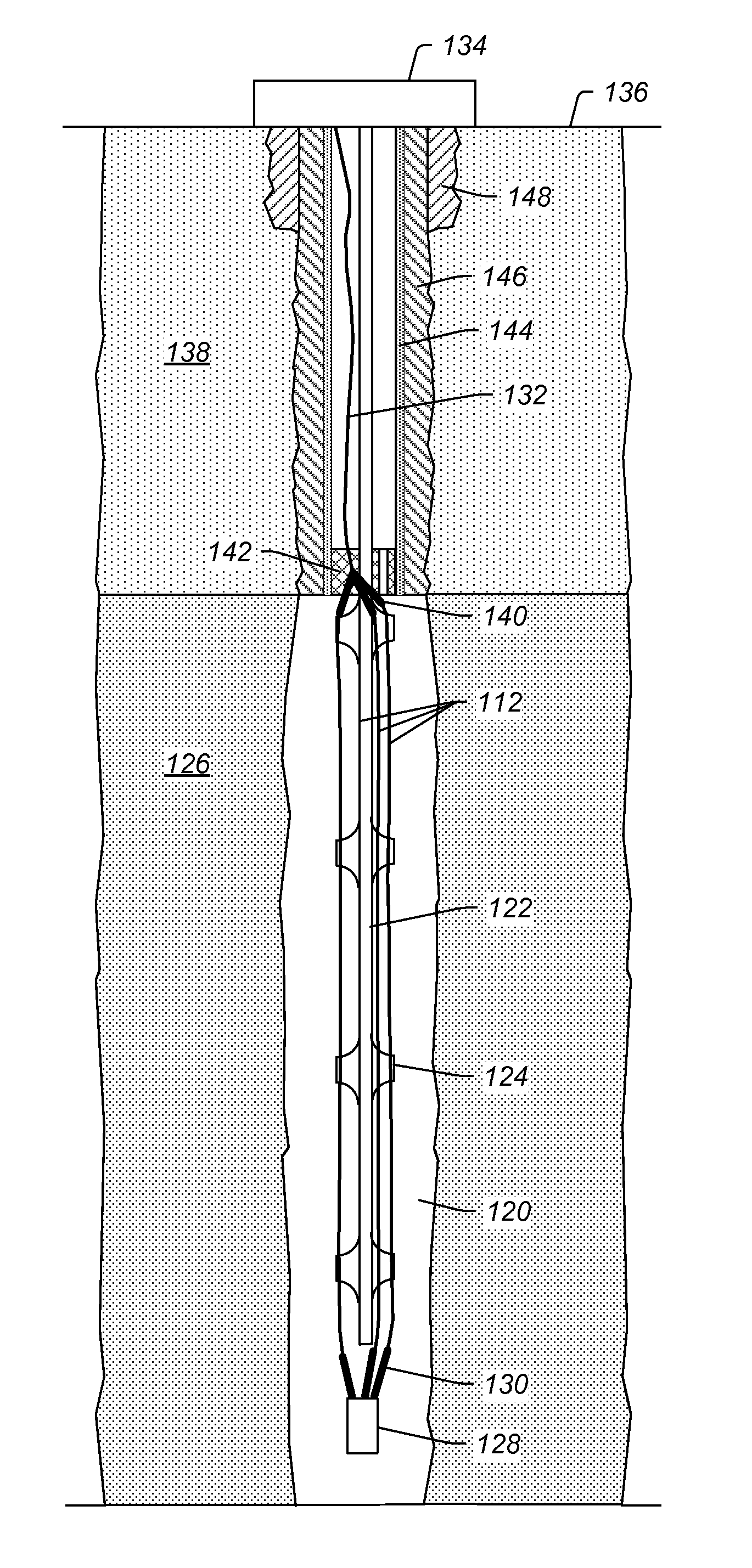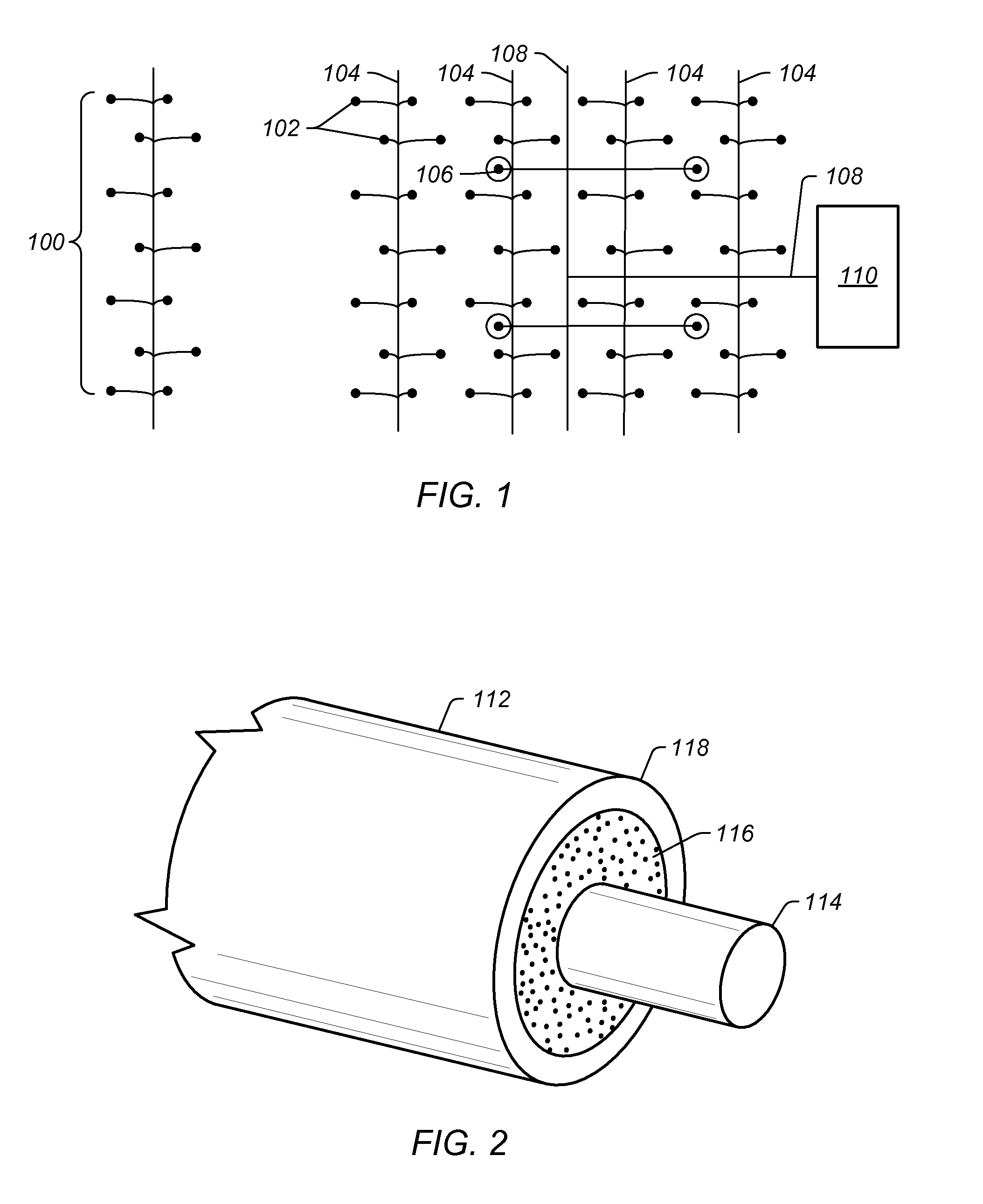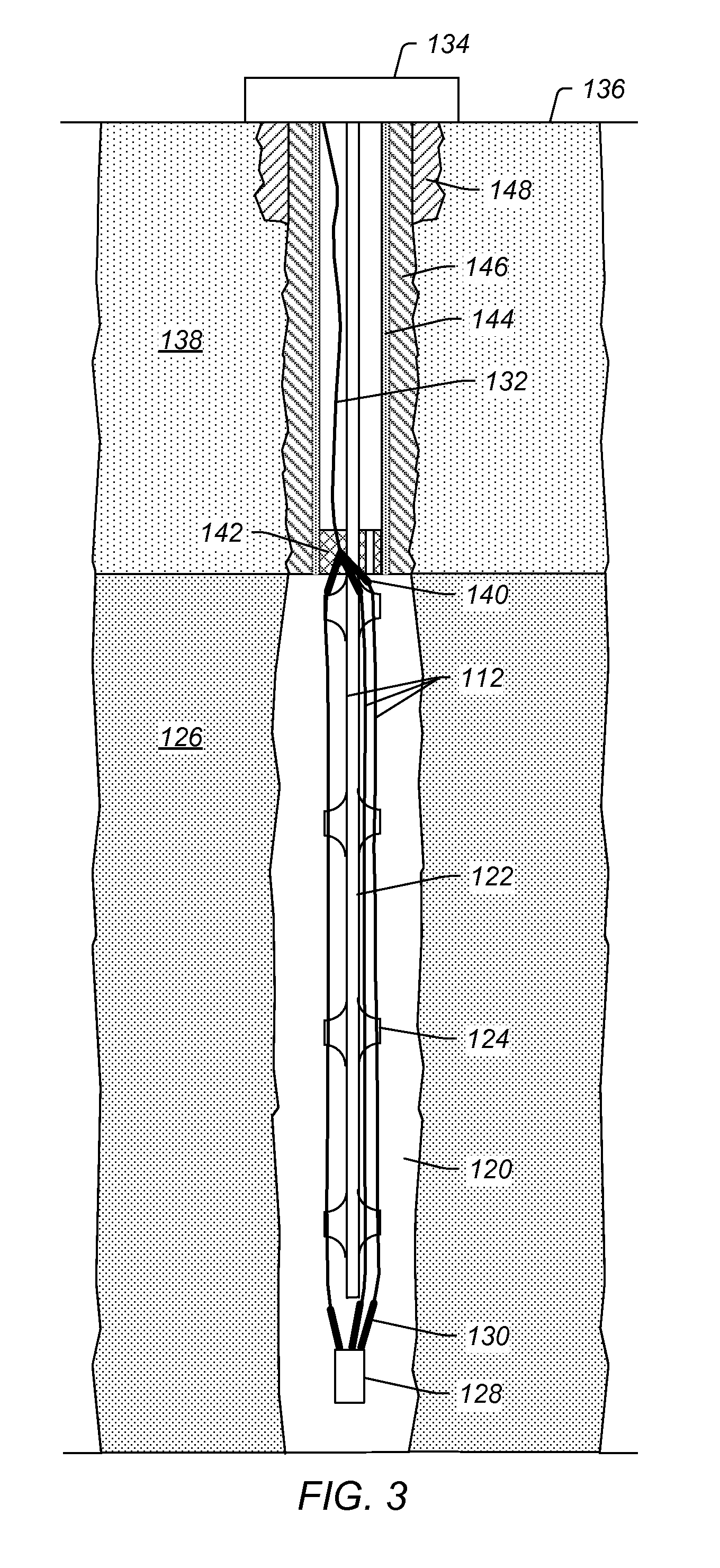Using dielectric properties of an insulated conductor in a subsurface formation to assess properties of the insulated conductor
- Summary
- Abstract
- Description
- Claims
- Application Information
AI Technical Summary
Benefits of technology
Problems solved by technology
Method used
Image
Examples
Embodiment Construction
[0030]The following description generally relates to systems and methods for treating hydrocarbons in the formations. Such formations may be treated to yield hydrocarbon products, hydrogen, and other products.
[0031]“Alternating current (AC)” refers to a time-varying current that reverses direction substantially sinusoidally. AC produces skin effect electricity flow in a ferromagnetic conductor.
[0032]“Annular region” is the region between an outer conduit and an inner conduit positioned in the outer conduit.
[0033]“API gravity” refers to API gravity at 15.5° C. (60° F.). API gravity is as determined by ASTM Method D6822 or ASTM Method D1298.
[0034]“ASTM” refers to American Standard Testing and Materials.
[0035]In the context of reduced heat output heating systems, apparatus, and methods, the term “automatically” means such systems, apparatus, and methods function in a certain way without the use of external control (for example, external controllers such as a controller with a temperatu...
PUM
 Login to View More
Login to View More Abstract
Description
Claims
Application Information
 Login to View More
Login to View More - R&D
- Intellectual Property
- Life Sciences
- Materials
- Tech Scout
- Unparalleled Data Quality
- Higher Quality Content
- 60% Fewer Hallucinations
Browse by: Latest US Patents, China's latest patents, Technical Efficacy Thesaurus, Application Domain, Technology Topic, Popular Technical Reports.
© 2025 PatSnap. All rights reserved.Legal|Privacy policy|Modern Slavery Act Transparency Statement|Sitemap|About US| Contact US: help@patsnap.com



